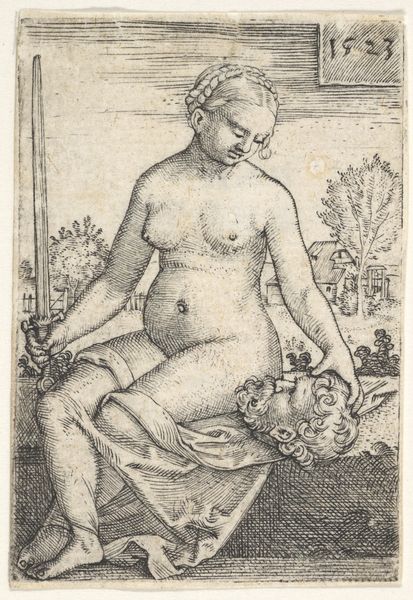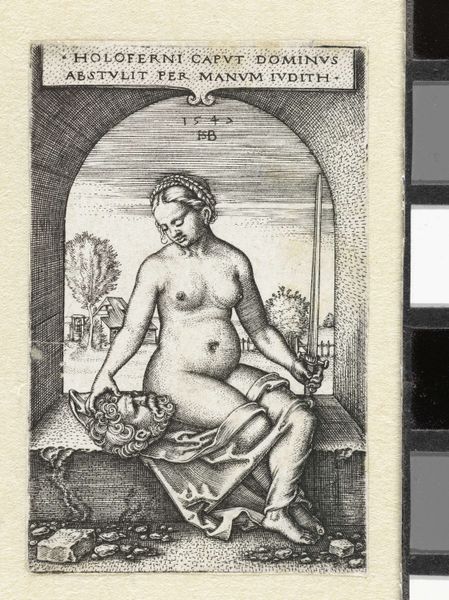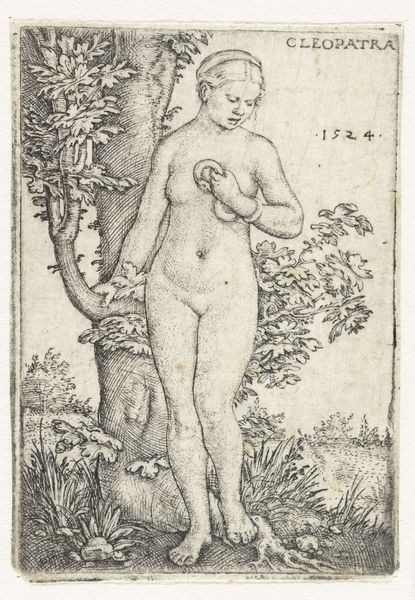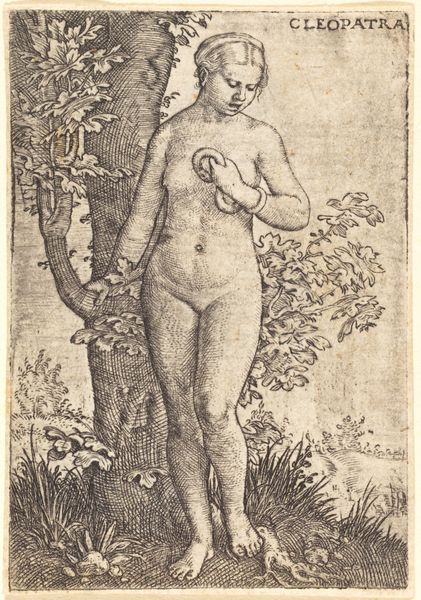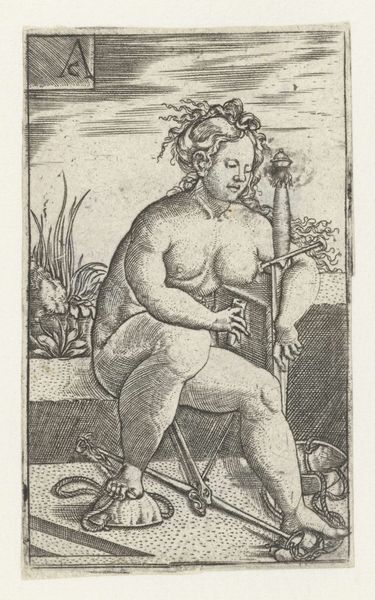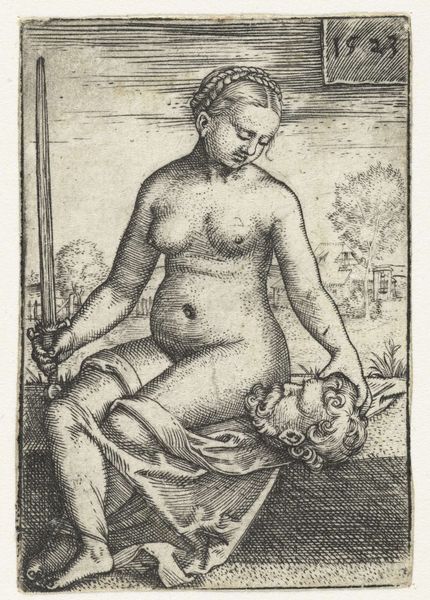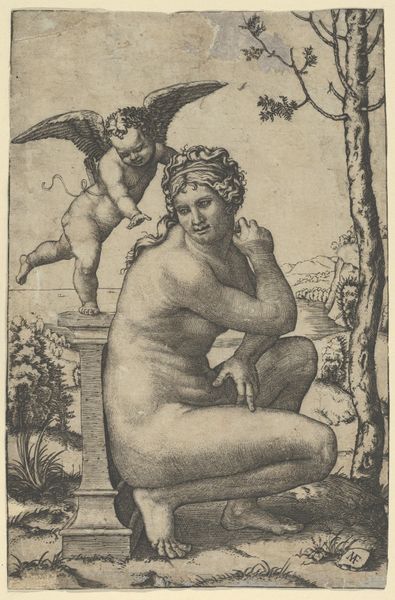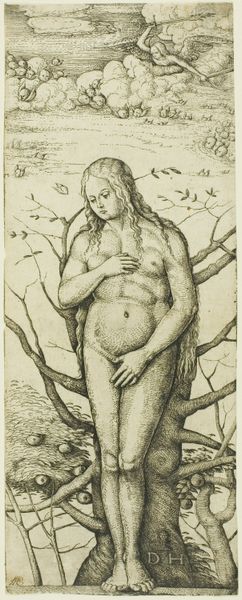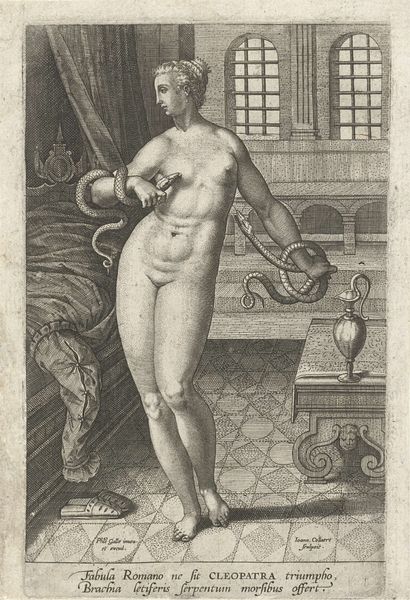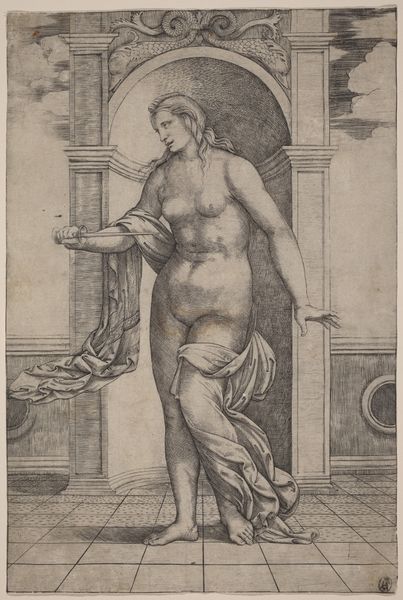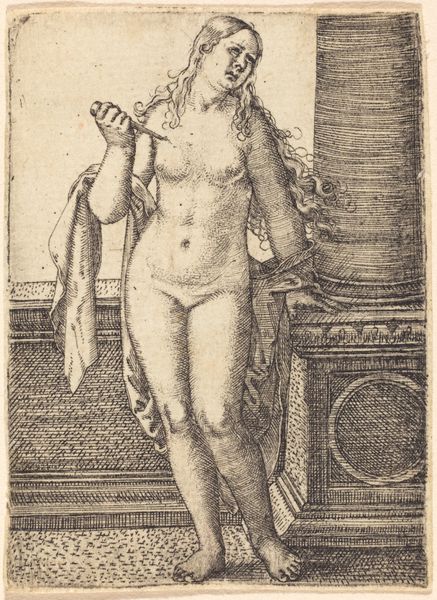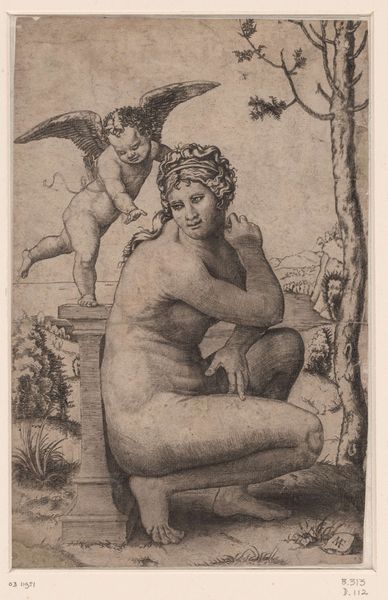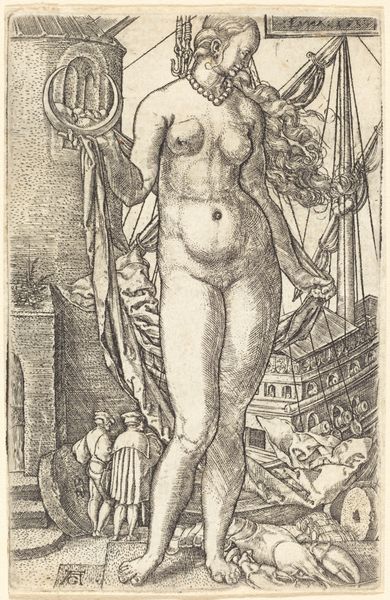
print, engraving
# print
#
figuration
#
11_renaissance
#
history-painting
#
northern-renaissance
#
nude
#
engraving
Dimensions: sheet (trimmed to plate mark): 7.5 x 5 cm (2 15/16 x 1 15/16 in.)
Copyright: National Gallery of Art: CC0 1.0
Curator: Looking at this engraving by Sebald Beham from 1547, titled "Judith Sitting in a Window," the first thing that strikes me is this sense of quiet, almost unsettling, stillness. The woman has this remarkable placidity, a sort of…domesticity, even in the immediate aftermath of, well, you know. Editor: Yes, domesticity amidst decapitation. A peculiar tranquility does emanate from her, as if she's merely arranging flowers and not cradling a severed head. The arch framing her – is it intended to evoke a halo or simply a window frame? I find that ambiguity compelling. Curator: I think it plays with both, cleverly. This piece presents a potent symbol of female power. Judith's nudity, isn’t simply for aesthetic purposes here. The text overhead translates to “The Lord took Holofernes’ head through the hand of Judith.” The arch hints at divinity. It makes the whole composition a meditation on virtue and deliverance. Editor: Absolutely. Judith has, historically, embodied so many culturally constructed meanings. Courage, virtue, resistance… and of course, danger. Even the sword is less a tool of violence, I think, and more a symbolic rod of righteousness. There is a potent image here – is the male aggressor subdued beneath her, even cradled almost as a child? Curator: Exactly. And Beham captures that charged ambiguity beautifully. The house beyond is a reminder, too, I think, of what's at stake. What is she defending by way of her deed? Family, security… home. Editor: Which echoes through history – even now this image vibrates. It forces us to consider our contemporary interpretations of such archetypes and how our visual culture informs them. What bravery and violence mean in the long-term. Curator: Indeed. Even without knowing the specific story of Judith, the piece evokes the weight of momentous choices and hidden struggles—which gives this 16th-century piece a profoundly modern resonance. Editor: Agreed. It’s a stark reminder that these dialogues of power and morality echo through the ages, each symbol gaining and shedding significance with time. Fascinating.
Comments
No comments
Be the first to comment and join the conversation on the ultimate creative platform.
